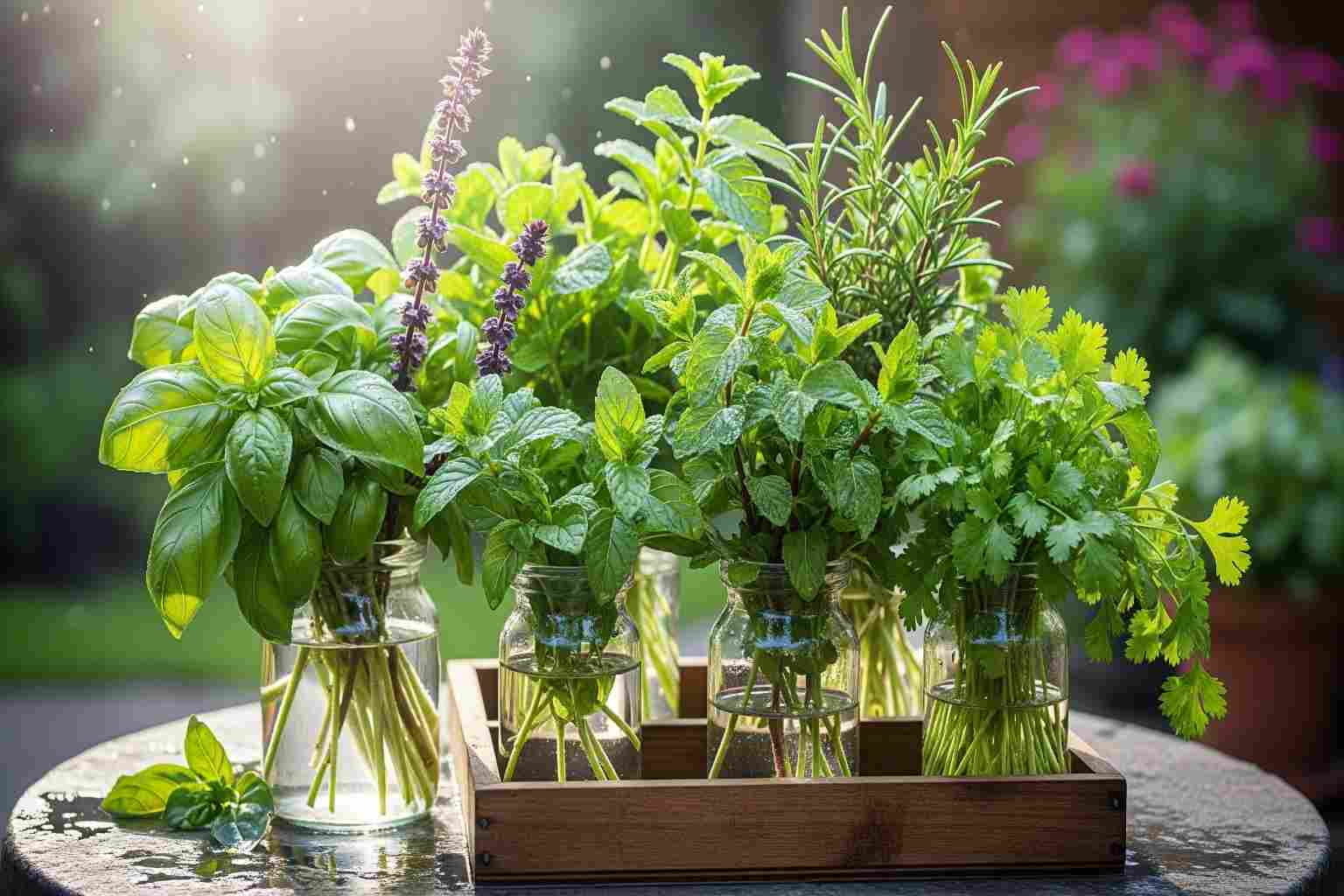Fresh herbs can elevate any dish, but without refrigeration, they tend to wilt quickly. Luckily, there are tried-and-true methods that help extend their life well beyond a few days. These techniques rely on natural preservation, moisture balance, and careful storage to keep herbs vibrant, aromatic, and flavorful for weeks, even without a fridge.
1. Store in a Damp Cloth Wrap

Wrap your herbs in a slightly damp cotton cloth or paper towel to retain moisture without soaking them. Place the wrapped bundle in a breathable bag or container and keep it in a cool, shaded spot. This method mimics natural humidity control and prevents wilting. For best results, refresh the cloth every 2–3 days to avoid mold growth. The same principle is used in professional kitchens to store fresh greens and flowers.
2. Use a Glass of Water Like a Bouquet
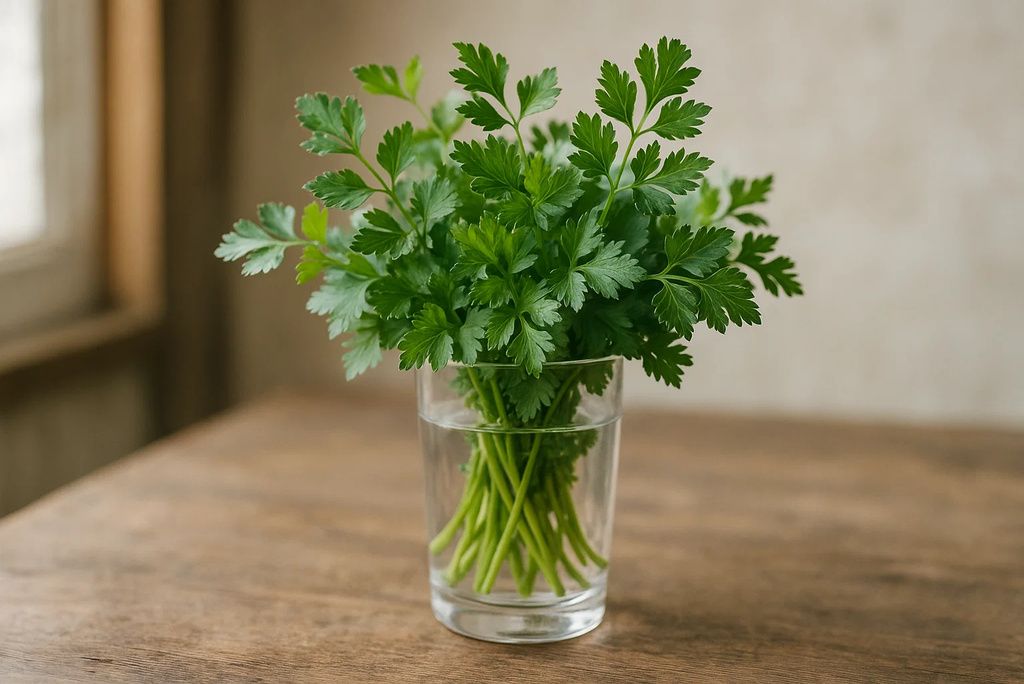
Treat your herbs like fresh flowers—trim the stems and place them in a glass of clean water. Keep the glass away from direct sunlight but in a naturally cool area for prolonged freshness. Change the water daily to prevent bacterial growth and maintain flavor. This works best for soft herbs like basil, mint, and parsley. Some chefs even cover the top with a plastic bag to create a mini-greenhouse effect that locks in essential oils.
3. Keep in a Clay Pot for Natural Cooling
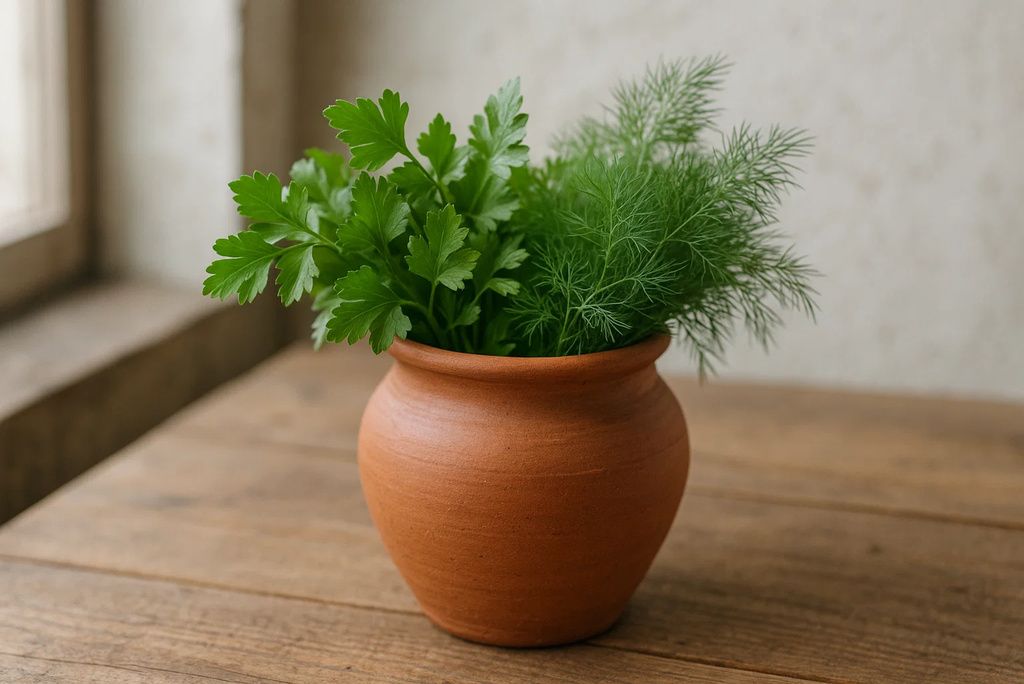
Clay pots, also known as “zeer pots” in some cultures, naturally regulate temperature and humidity levels for longer preservation. Place herbs inside, wrap loosely in paper, and cover for protection. The porous clay draws moisture from the air, keeping herbs cool, hydrated, and fresh longer. This ancient technique is still used in regions without refrigeration, especially for storing delicate greens and spices. It’s a completely natural and chemical-free method that can help in warm climates.
4. Hang-Dry for Extended Shelf Life
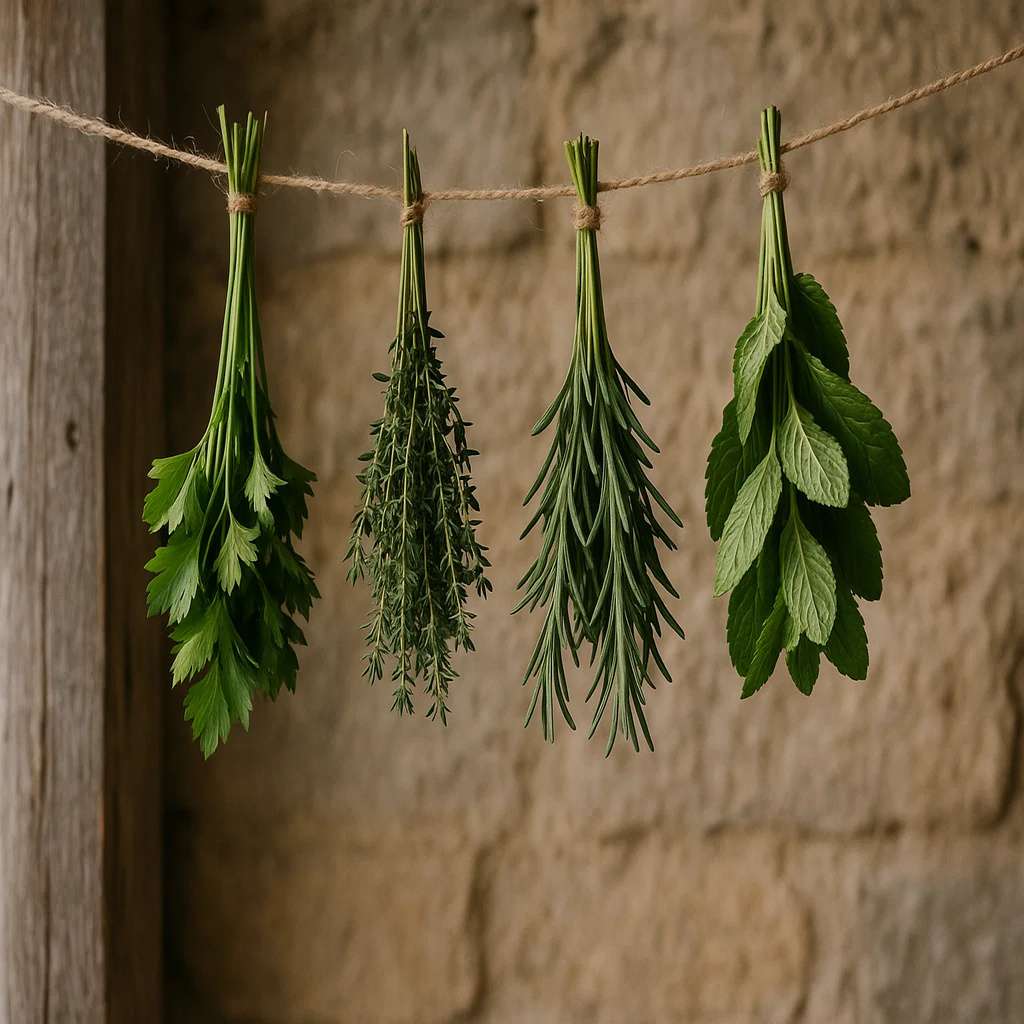
If you don’t need herbs fresh immediately, air-drying is a simple, reliable preservation method used for centuries. Tie small bundles and hang them upside down in a warm, dry, and well-ventilated space away from direct sunlight. Once fully dried, store in airtight jars to maintain potency. While this changes the texture, dried herbs maintain flavor for months and can be crushed into seasonings or tea blends for added versatility in the kitchen.
5. Submerge in Olive Oil
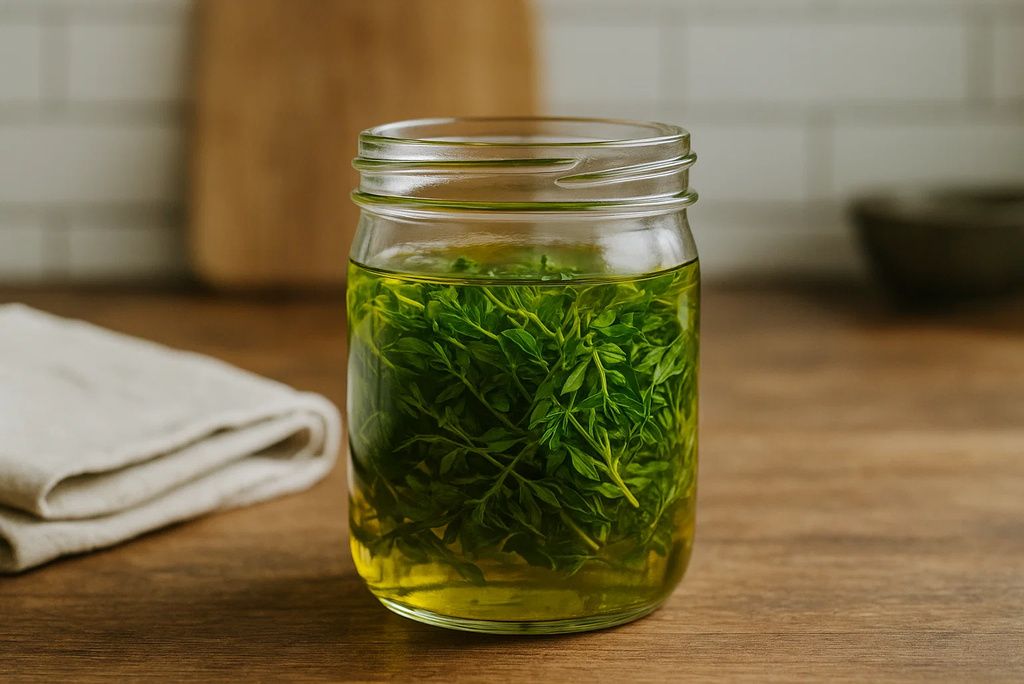
For herbs like rosemary, thyme, or oregano, submerging them completely in olive oil can preserve flavor and prevent oxidation naturally. Store the oil-covered herbs in a sealed jar in a cool place away from sunlight. The infused oil becomes a delicious cooking ingredient, perfect for dressings or marinades, while keeping the herbs soft and aromatic. This method locks in both fragrance and nutrients for weeks, making it popular in Mediterranean cooking traditions.
6. Use Vinegar Preservation
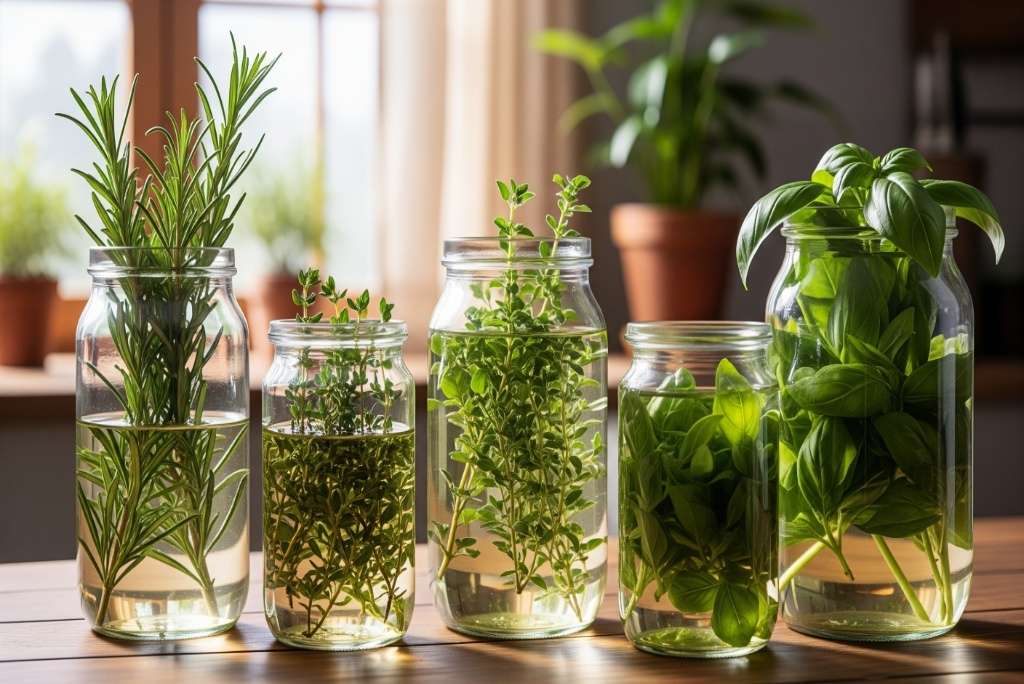
Submerging herbs in vinegar not only keeps them from spoiling but also creates flavorful infusions for salads, marinades, and sauces. This method works best with robust herbs such as tarragon, basil, or sage, which retain their aroma well. Keep the jar sealed and away from sunlight for maximum flavor preservation. Many chefs also blend vinegar-preserved herbs into salad dressings or dipping sauces for extra zest and depth. (healthygreenkitchen)
7. Store in a Cool Pantry
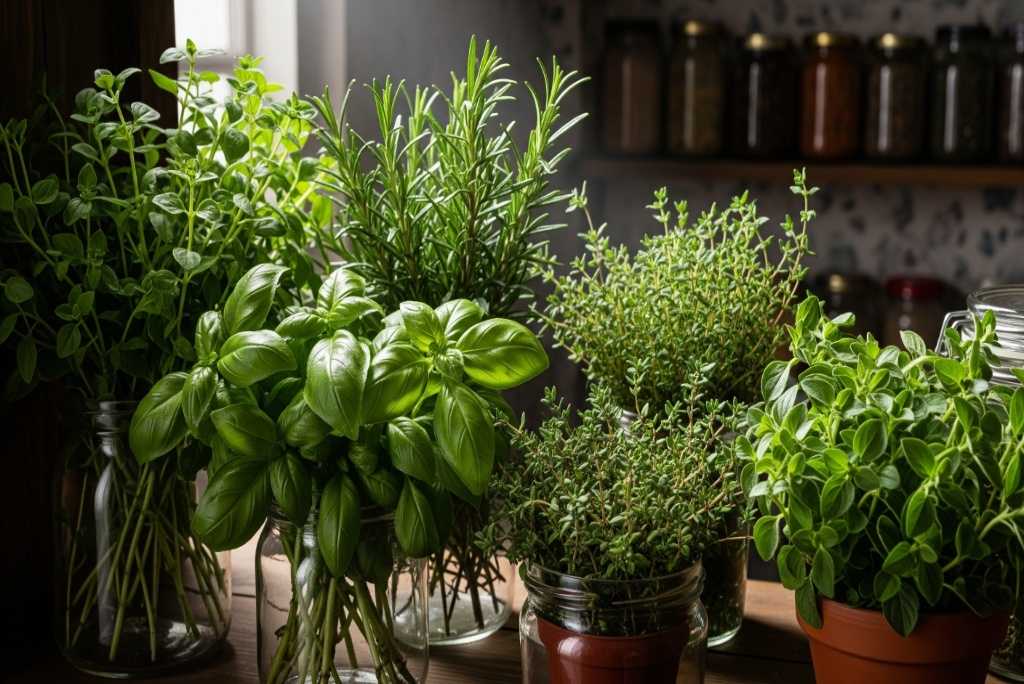
If you have a pantry that stays significantly cooler than the rest of your home, store herbs there wrapped in breathable paper or cloth. The key is avoiding excess humidity and temperature fluctuations that could speed spoilage. This method works well for hardier herbs like rosemary and thyme, which naturally withstand cooler storage conditions. Traditional kitchens in Europe have long relied on this technique to keep herbs ready for daily cooking. (tastyble.com)
8. Pack in Salt
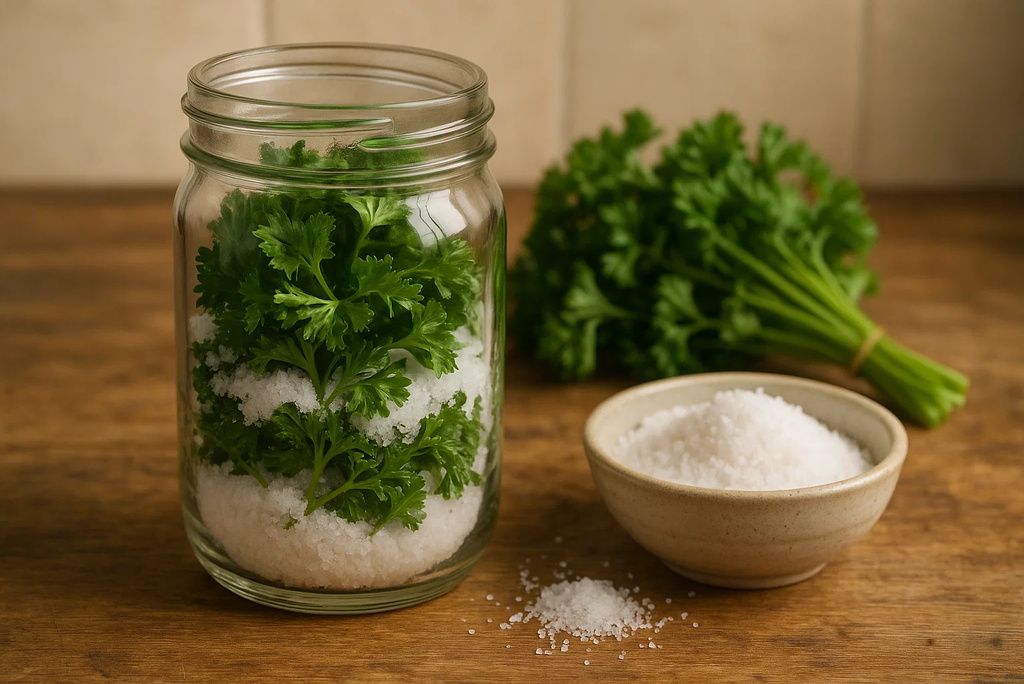
Layering fresh herbs with coarse salt in a jar draws out moisture and creates a natural preservation barrier. The herbs maintain their essential oils and flavor for weeks without refrigeration. Use this for preserving small amounts of basil, dill, or chives, especially when cooking seasonally. The salt can also be reused as herb-infused seasoning, adding a gourmet touch to many dishes. (finedininglovers)
9. Keep in a Root Cellar or Underground Storage
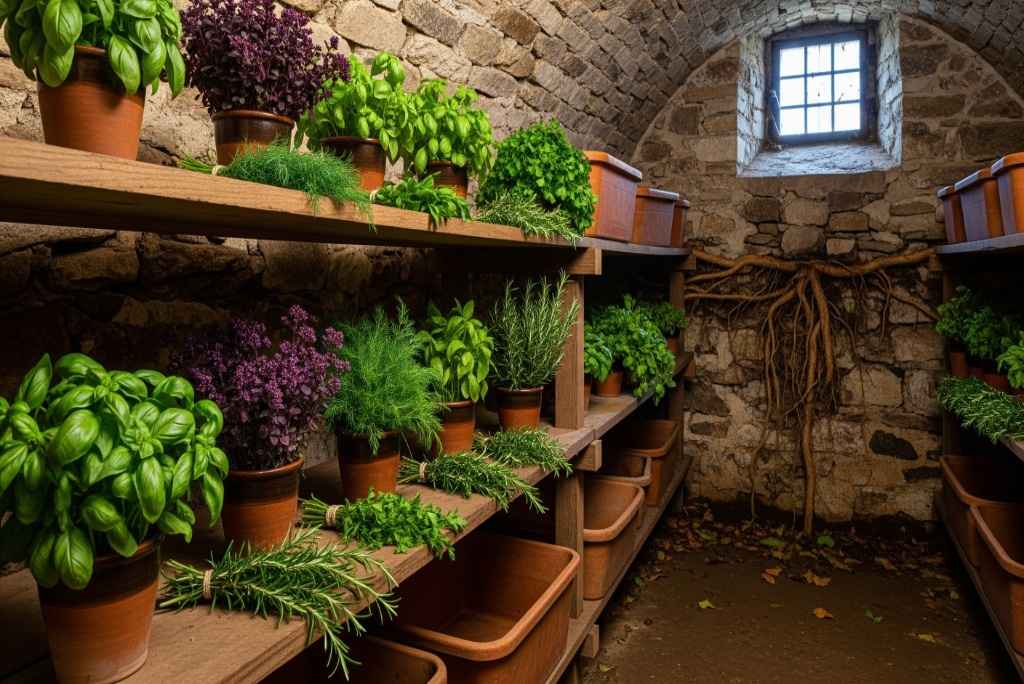
Root cellars naturally stay cool and dark, making them perfect for storing herbs in breathable containers like wicker baskets or linen bags. If you don’t have a cellar, a buried clay pot with a tight lid can work in cooler climates. This technique is especially useful for large harvests during peak growing seasons, ensuring herbs last well into the winter months without losing flavor. (almanac)
10. Wrap in Wax Paper
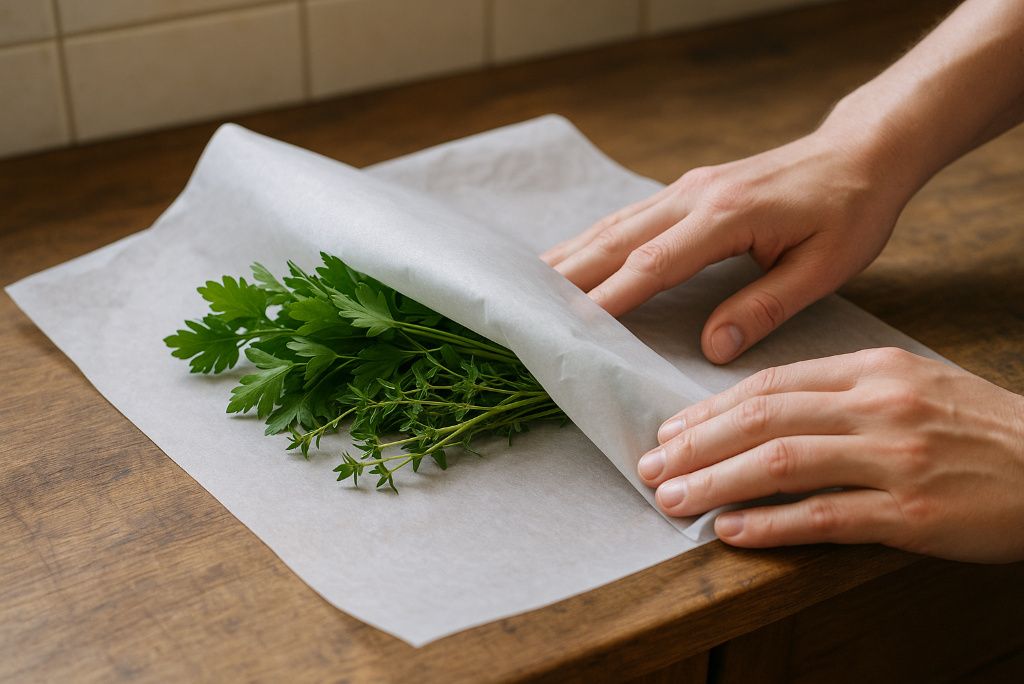
Unlike plastic, wax paper allows herbs to breathe while retaining enough moisture to prevent excessive drying out. This is especially effective for parsley, cilantro, and mint, which wilt quickly otherwise. Store wrapped bundles in a cool cabinet or pantry, away from direct light. Wax paper is also biodegradable, making it an eco-friendly choice for sustainable herb storage.
11. Use Charcoal for Moisture Control
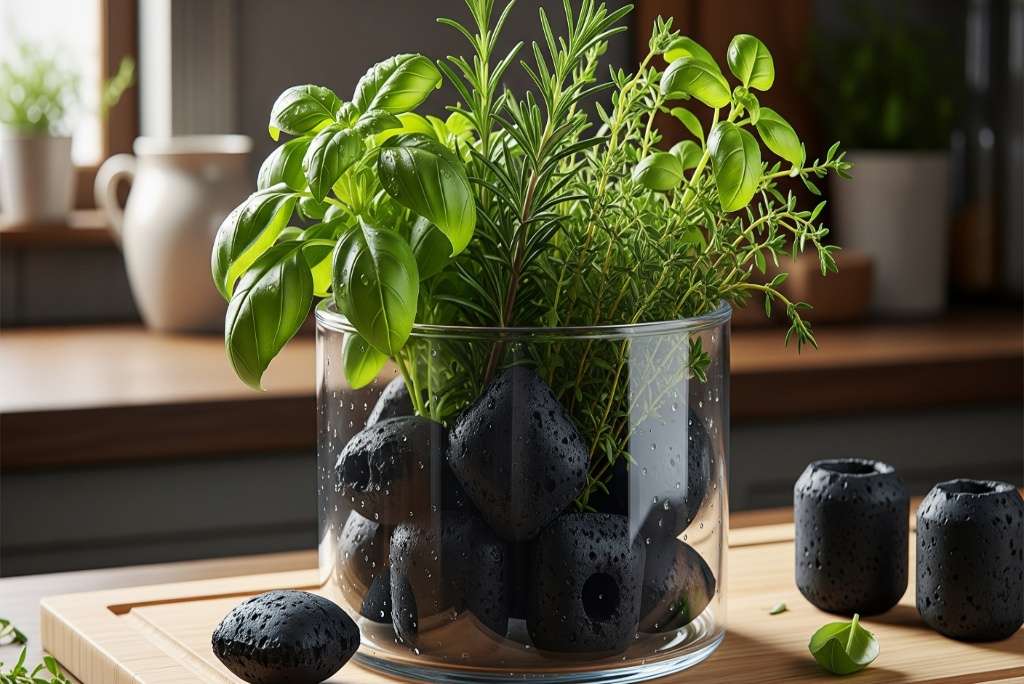
Adding a piece of activated charcoal to your herb storage container can help regulate moisture and prevent mold growth naturally. This works especially well in humid environments where herbs tend to spoil quickly. The charcoal absorbs excess humidity and keeps storage containers fresher for longer periods. This technique is often used alongside cloth wrapping for maximum preservation benefits. (sciencedirect)
12. Keep Away from Ethylene-Producing Produce
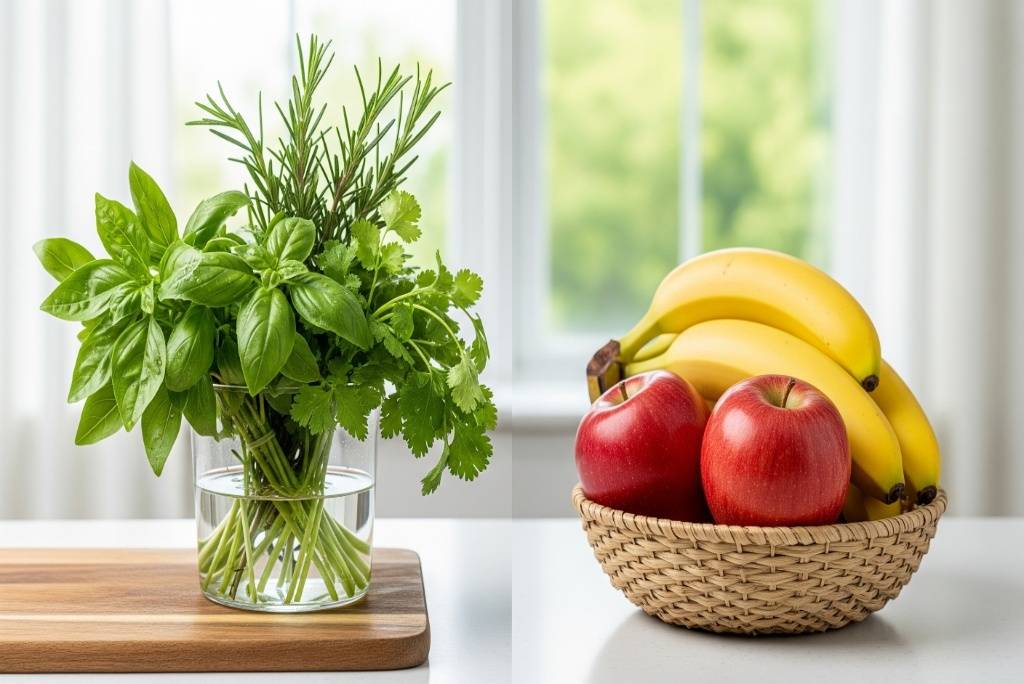
Certain fruits and vegetables, like bananas, apples, and tomatoes, release ethylene gas, which speeds up the spoilage of nearby herbs and greens. Store herbs far from such produce to extend their lifespan naturally and preserve full flavor. Even a few days’ exposure to ethylene can significantly reduce freshness and quality. Keeping herbs in a separate, well-ventilated space is a simple but often overlooked preservation step that works exceptionally well in warm kitchens and market stalls.
13. Use a Bamboo Basket
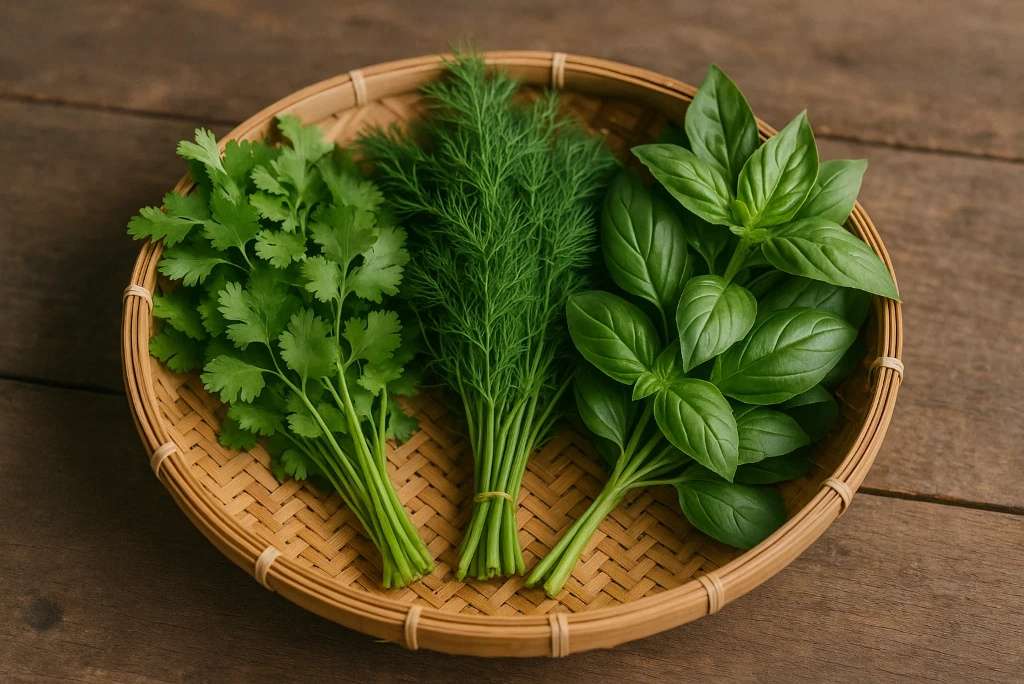
Bamboo baskets allow airflow while protecting herbs from direct light, heat, and excess humidity, which can quickly cause wilting. They are particularly effective in tropical climates where mold risk is high and ventilation is essential. This technique is still used in many Asian kitchens to store herbs for daily use and market sales. Lining the basket with breathable fabric can help keep leaves crisp while preventing pests and enhancing the herbs’ visual appeal.
14. Press Between Parchment Sheets
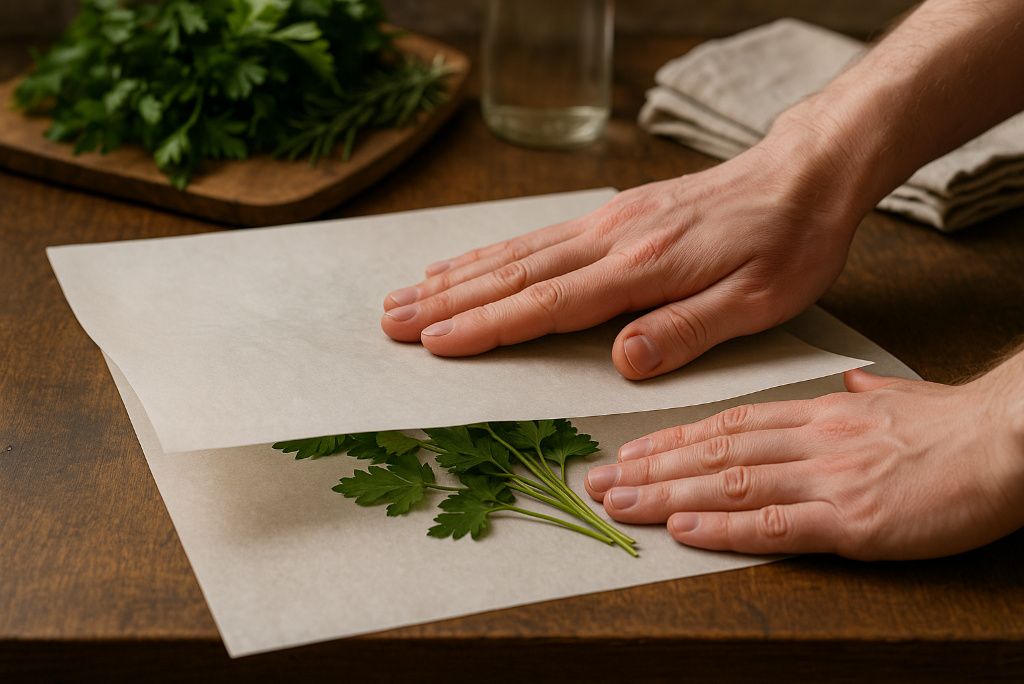
Gently pressing herbs between parchment sheets and placing a light weight on top can help flatten and preserve them for later culinary or decorative use. This works for edible garnishes like basil, mint, and delicate edible flowers that bruise easily. Once pressed, store them in a dry container away from direct sunlight to prevent color loss. Pressed herbs are ideal for garnish, crafts, or creating unique culinary decorations for desserts, cocktails, and festive table settings.
15. Store in a Linen Herb Pouch
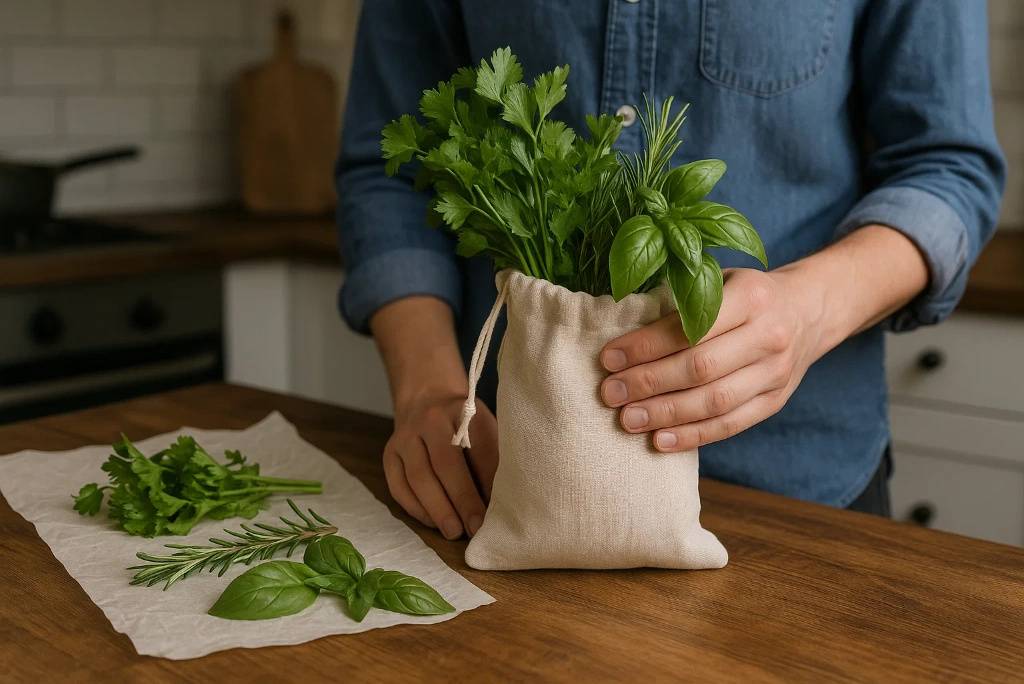
Linen pouches allow herbs to breathe while protecting them from excess light, moisture, and pests, extending freshness naturally. You can even add a small bundle of dried lavender or rosemary inside to help deter insects and enhance aroma. This method is reusable, eco-friendly, and perfect for long-term storage without refrigeration in kitchens, pantries, and travel kits. Many traditional kitchens still use cloth pouches for preserving seasonal harvests year-round, ensuring flavorful cooking even during off-season months.

